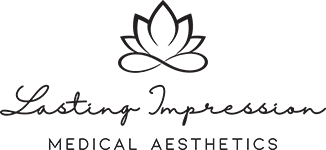You have probably seen me do treatments like Botox or fillers, which I have videotaped and written about, guiding you through the whole process and outcomes step by step. But Sculptra is something else entirely! Embrace the art of aging gracefully with Sculptra.
While injecting a substance into the skin is comparable, this therapy works on another level. Sculptra increases collagen formation in the skin, resulting in volume created by the skin rather than a foreign material. Sculptra vs. traditional fillers: which should I choose?.
There are several advantages to using this procedure, ranging from longer-lasting effects to beauty and cost-effectiveness. I have used this surgery myself and can walk you through the process and the incredible outcomes.
Doctor, my trusted dermatologist, has been with me throughout this journey, and her professional judgment and expertise will be woven throughout this piece. So please keep reading to learn all there is to know about Sculptra, what it works, and what to anticipate from the procedure.
What Exactly Is Sculptra?
Sculptra is an injectable dermal filler. And boosts the skin’s natural collagen synthesis. According to the doctor, the component in Sculptra is poly-L-lactic acid (PLLA), a kind of milk.
The material is delivered as a powder in vials; this powder is mixed in a saline solution and must remain in that state for at least three to four days before being injected into the skin. The product is known as Sculptra or Sculptra Aesthetic and has been on the market for some time. For more details, check out Sculptra Aesthetic.
Is Sculptra a Filler?
Sculptra is a dermal filler. Thus the answer is technically yes. However, it behaves and feels differently than other fillers. Sculptra does not operate instantly, unlike other chemicals that create volume beneath the skin when injected.
Aside from some swelling and minor bruising, you will not appear any different after Sculptra. Instead, the chemical will dissolve over two weeks and promote natural collagen synthesis.
According to the Doctor, this procedure will take 60 to 80 days, after which your face will be plumper, and your skin will be more lifted.
Is Sculptra FDA Approved?
Poly-L-lactic acid has been widely employed on a global scale since 1999. It was initially used to treat fat cell loss in HIV patients on antiretroviral treatment; these individuals had lipoatrophy or severe fat loss on the face. Deep skin folds, wrinkles, and depressed regions would result.
In 2004, the FDA authorized poly-L-lactic acid to treat HIV patients for the first time. The FDA regulated the use of the drug in 2009 for persons with healthy immune systems to treat facial wrinkles and volume loss. Sculptra Aesthetic was approved for the lather.
How Does Sculptra Work?
Sculptra promotes the body’s natural collagen production. Collagen is the most abundant protein in the body, holding the structure of various components together. Ligaments, tendons, and skin are examples of them.
The collagen contained in the skin collaborates with another protein called elastin to maintain its structure, framework, and firmness. Collagen synthesis declines as we age due to natural aging or external causes such as sun exposure or smoking.
Collagen loss causes the skin to wrinkle and droop as it is less supported, resulting in extra skin, creases, and wrinkles. The overall impact is a volume loss; as the doctor describes it, this consequence is particularly noticeable in fragile persons since a more extensive fat layer maintains the skin appearing plumper and elevated.
While collagen loss is expected around the age of 45-50, it is not irreversible. This is where products like Sculptra may be beneficial in restoring volume, plumpness, and a youthful look. How Sculptra can change lives: reviews from users.
Sculptra is a dermal filler that is semi-permanent, absorbable, and injected.
They are used mainly on the face. It comprises poly-L-lactic acid, a powdered alpha-hydroxy acid type material. It is injected into the skin’s deep layers after diluting with saline solution and an anesthetic (lidocaine).
According to the Doctor, the solution dissolves into the skin in approximately two weeks and is absorbed solely at the skin level, so it does not enter the bloodstream. As the particles degrade, they stimulate the creation of new collagen fibers.
These fibers will continue to grow over the following several months. You may see effects after 60 to 80 days; the impact will remain for 12 to 24 months. The skin’s structure starts to lift as these collagen chains form because it now has design and support to rely on. This will make drooping skin around your jawline, nasolabial folds, under-eye region, and other areas noticeable.
What Areas Is Sculptra Best For?
The FDA has authorized Sculptra Aesthetic to treat facial wrinkles and folds like the nasolabial fold. As a result, its primary use is in the face region. The temple region is critical to examine since it supports a significant portion of the face. The loss of collagen fibers here causes jowls, or sagging skin in the jawline region, which affects the shape of the face.
The nasolabial folds, which become highly visible as the cheeks drop, are another region that is addressed. The under-eye part might also seem sunken and saggy due to insufficient collagen to maintain the skin structure.
On the other hand, poly-L-lactic acid has been utilized off-label for various body parts. These include abnormalities of the hands, neck, thighs, and chest. Off-label indicates that a drug authorized by the FDA for a particular purpose is being used differently.
Doctors suggests a different filler called Radiesse for the neck and hands (more on this below when we compare Sculptra to other dermal fillers).
Sculptra Before & After
Because it takes around two months to generate collagen molecules, Sculptra benefits are best seen after 60 to 80 days. Other fillers, including hyaluronic acid-based treatments, are your best choice if you want quick results. Sculptra, on the other hand, is fantastic for long-term, highly natural results.
According to Doctor’s, the results “look and feel natural,” no one would guess you have had work done just by glancing at you. Because, in reality, your body accomplished most of the job with some assistance from the Sculptra treatment.
Three months after my Sculptra treatment, I attended my follow-up session to assess the results. And I must tell you that the results are fantastic! My complexion is brighter and plumper, and everything seems more lifted.
Specific results will occur in the locations where the doctor injected Sculptra. Under-eye hollowness is reduced, and drooping skin is raised. Heavy, sagging cheeks are lifted, and the extra volume gives the complexion structure. Injections in the temple region support a significant portion of your face, elevating the jowls and restoring a robust bone structure.
The overall result is natural since you appear like you did 15 or 20 years ago, and it is not overdone. Doctors suggest you continue the therapy every year or year and a half, depending on your body’s response and capacity to maintain the original effects. For a deeper look, explore The evolution of injectable treatments featuring Sculptra.
I think my before and after shot says volumes about the effect this Sculptra treatment has had on me.
What to Expect After the Procedure and Possible Side Effects
The operation is virtually painless, fast, and straightforward. Poly-L-lactic acid is a powder, and the microspheres are combined with saline solution and lidocaine. The latter is an anesthetic that relieves pain.
The doctor will also administer numbing cream to the injection sites, which will be left. Apply to the skin for 20 to 30 minutes depending on the severity—pain tolerance.
Because the needles are so tiny, the treatment is minimally invasive, rapid, and usually painless.
However, like with any injectable medication, minor side effects will occur. The typical Sculptra response is slight swelling at the injection site; patients may mistake this for a quick increase in volume, as with conventional fillers, but it is merely modest inflammation. This will be resolved in three to four days.
Another possibility is some bruising where the needle was put. The bruising should be mild when seeing a board-certified dermatologist with competence in such procedures (which is always required! ). This effect should go off in a few days to a week. It would help if you also refrained from using any blood-thinning drugs (aspirin, ibuprofen, or fish oil) for ten days before the surgery since they increase the risk of bruising and bleeding.
There is a danger of growing lumps beneath the skin. However, this risk rises if the solution is not sufficiently diluted or the necessary massage is not performed (more on below). When injecting, there is a chance of hitting a blood artery or obtaining an infection in scarce circumstances. Going to a well-skilled medical expert should reduce these dangers significantly.
In my situation, the only side effects of the operation were mild swelling and bruising.The doctor suggests using an arnica-based lotion to help with bruising.
Massage the injected regions immediately after and a few days after the therapy. This helps to distribute the microspheres in the fluid uniformly, activates the collagen molecules, and avoids lump formation. More information on how to do the massage motions follows.





